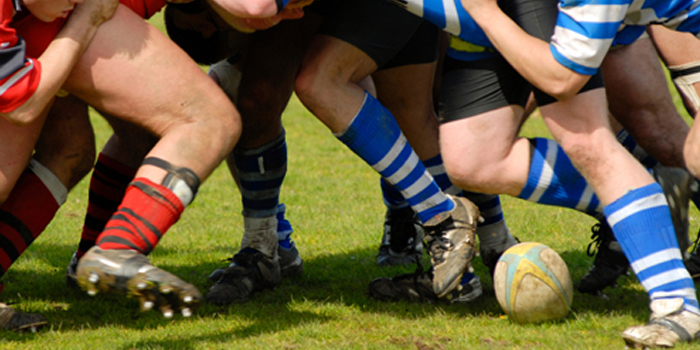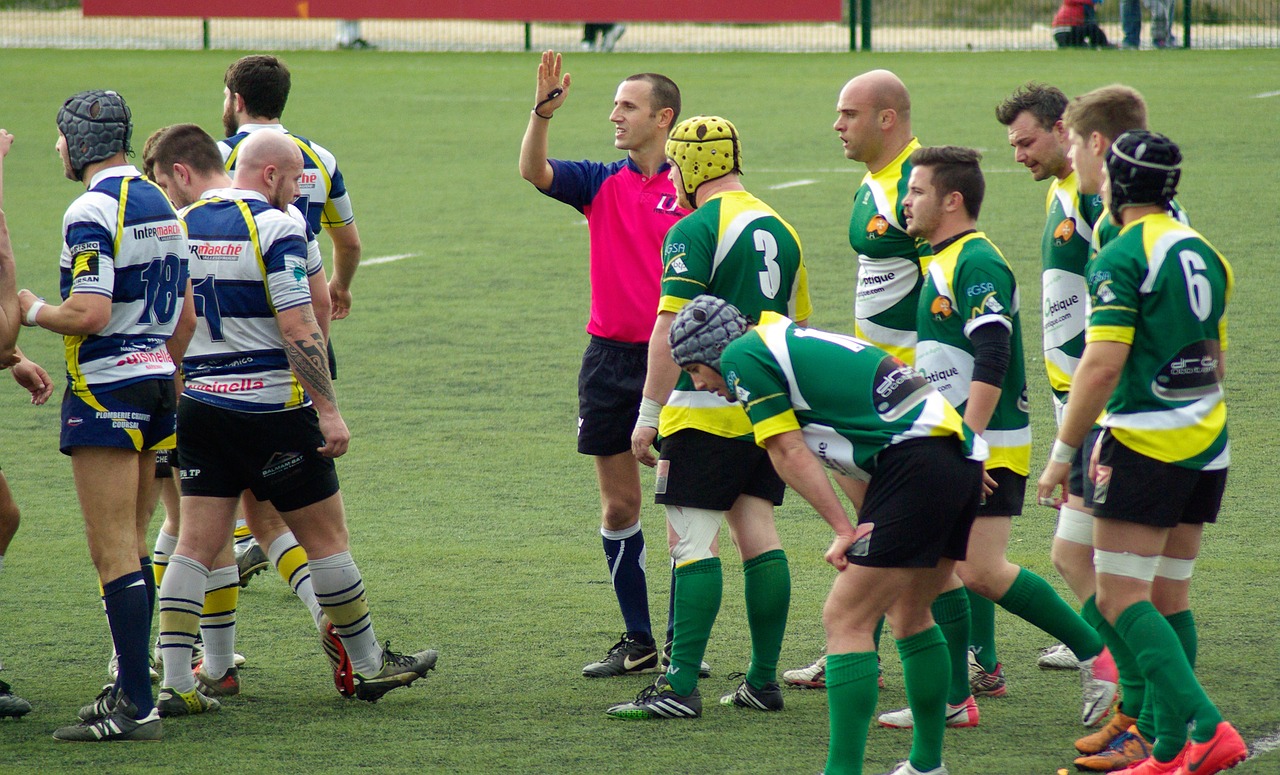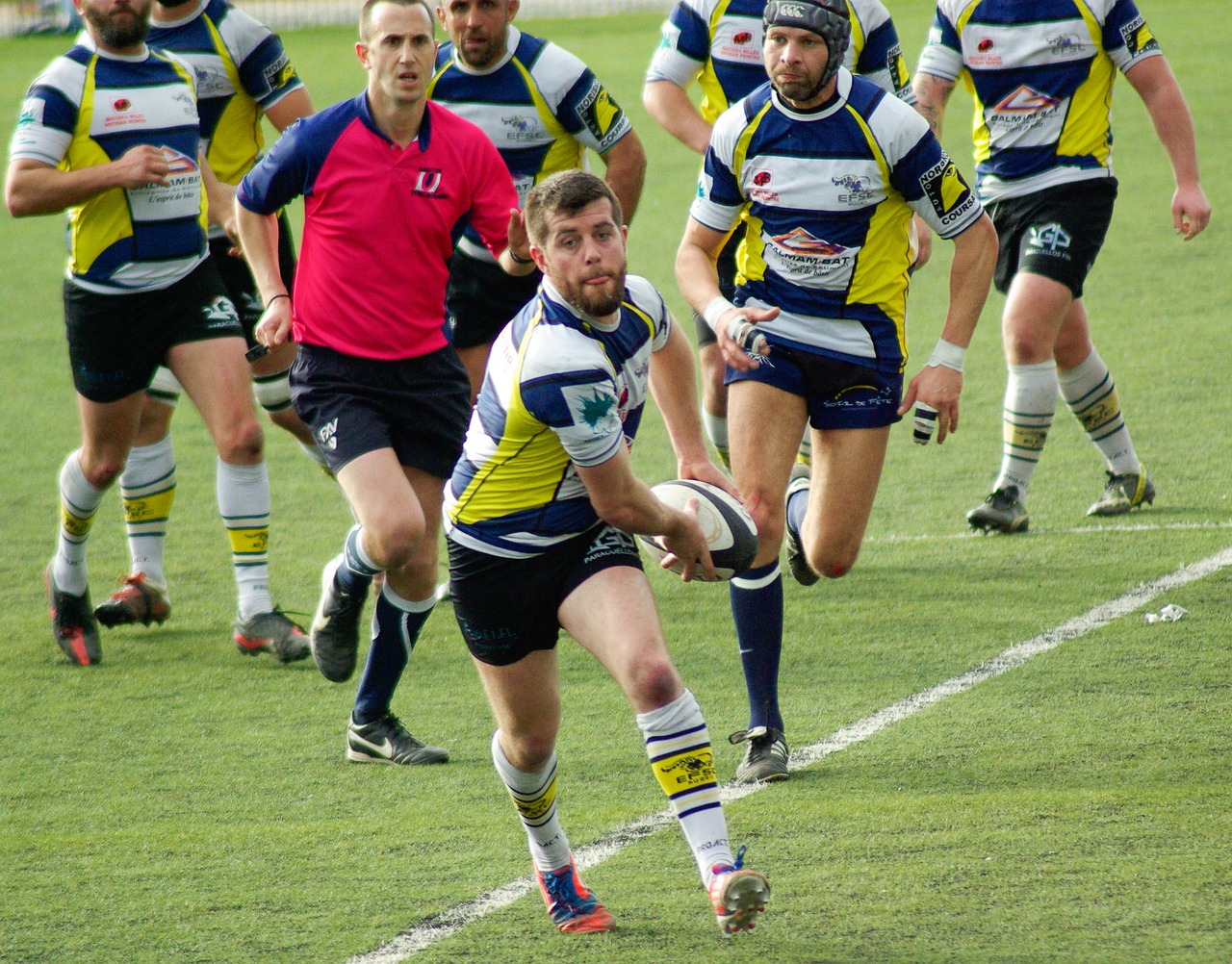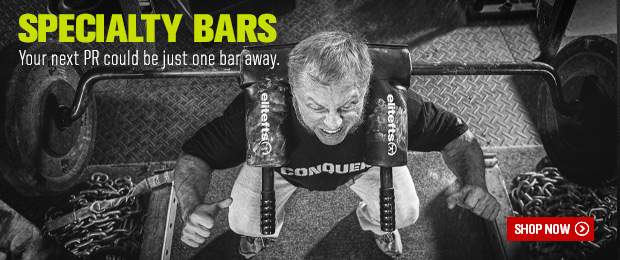
First, I'd like to thank one of my readers who asked about the details of specialty bars. That reader provided the stimulus for this article.
Training variation has always been a cornerstone of my strength training philosophy, especially when training rugby players. Most players will present with an injury or history of injuries that make certain movements almost impossible to perform.
The bars that I use on a regular basis in my training programs include the cambered bar, the trap bar, the safety squat bar and the football/Swiss bar.
Rationale 1
Specialty bars allow me to vary the training stimulus around an injury area. Most of the forwards I train have shoulder girdle issues, which makes holding a bar in a back squat position near impossible. Due to associated wrist issues, a front squat is also out of the question. Enter the cambered bar and safety squat bar, and the problem is instantaneously solved. These bars allow the player to position the bar on his body in a pain-free area and then squat normally. The added advantage is that these two bars also provide an increased demand on the erectors of the lower back, which is an area that needs transfer from the gym to the field.
Rationale 2
Specialty bars add variety to existing exercise options. In particular, the cambered bar and trap bar allow for more variety with shoulder pressing movements. The increased range of movement using the trap bar ensures that the deltoids are effectively trained through a complete range with the elbows starting down around mid torso, allowing excellent abduction of the humerus in the movement. The cambered bar will move anteriorly and posteriorly, thus increasing the stabilization requirements of the core and rotator cuff in the pressing action.
Rationale 3
I believe that an 'elbows in' position for pressing actions in both the horizontal and vertical planes is more transferable to sport than the wider grips on pressing movements that are often programmed. To this end, the use of the football and Swiss bars allows a neutral grip and allows the player to keep the elbows in closer to the body as he presses through the range.
I'm always playing with angles in training programs to ensure that a muscle is worked in as many positions as possible and to ensure that all movements in the plane of both pushing and pulling are explored fully. I will also change the grip on the bar from supinated to neutral or hammer to pronated over the course of a session and I often attempt to include variation on each exercise to provide an adequate stimulus to the movements and/or areas. For example, let's discuss upper body pulling and upper body pushing.
For upper body pulling, we initially work the horizontal plane (let's call that zero degrees for the purpose of this article) with a pronated grip using a Pendlay or bent over row movement. Next, we work at 45 degrees using the Yates row with a supinated grip and the body inclined 45 degrees from the horizontal. Finally, we work the vertical plane, and there isn't anything better than using the trap bar for shrugs to complete the workout.
For upper body pushing, we work the horizontal plane using reverse grip bench press (made famous by Anthony Clark). Next, we work at 45 degrees using the incline bench press with the football bar. Finally, we work the vertical plane using the cambered bar for a military press.
The grip is very important in all sports, and by choosing a variety of grips on the various bars to train, you're ensuring that there are no weak links. So no matter what your training philosophy, you can take it to another level by utilizing the variety that is available to you.
RELATED 23 Loading Methods for Effective Set and Rep Schemes
As I wrote in a previous article, you can take your training to a higher power and thereby magnify effect. Depending on the movements that you're performing and the number of exercises in a session, you can actually use methods to the power of four to stimulate gains. You could effectively modify all the following variables:
- Grip: Pronated, supinated neutral
- Angle: Any combinations from 0 to 90 degrees
- Bar: Specialty bars or the traditional Olympic bar
- Sets/reps/intensity: By using a different number of sets for each movement or by going from a primary to secondary to tertiary to even a fourth exercise.
Regarding the point made above, you could address the programming as follows:
Primary movement: 6 sets loading cycle (wave loading)
- Week 1: 2 X (6/5/4)
- Week 2: 2 X (5/4/3)
- Week 3: 2 X (4/3/2)
Secondary movement: 5 sets loading cycle (strength)
- Week 1: 5 X 5
- Week 2: 2 X 5, 3 X 3
- Week 3: 5/4/3/2/1
Tertiary movement: 4 sets loading cycle (clusters)
- Week 1: 4 X 3/3 with 20 seconds rest
- Week 2: 4 X 2/2/2 with 20 seconds rest
- Week 3: 4 X 3/2/1 with 20 seconds rest
Fourth movement: 3 sets loading cycle (strength)
- Week 1: 3 X 5
- Week 2: 3 X 3
- Week 3: 5/3/1
Fourth movement: 3 sets loading cycle (size)
- Week 1: 12/10/8
- Week 2: 10/8/6
- Week 3: 8/6/4
—OR—
Fourth movement: 3 sets loading (size/endurance), drop set breakdown style (6-12-25 extended set); minimal rest between each set; start with a load of approximately 75 percent and decrease by 10–15% with each set; 3 sets with a 2–3 minute rest between extended sets
Fifth movement: 2 sets loading cycle (strength endurance/plateau load)
- Week 1: 2 X 15
- Week 2: 2 X 12
- Week 3: 2 X 10













Great points well explained as per usual. Having had a history of shoulder instability (both sides) and multiple operations, and STILL wanting to keep playing until I definitely can't I feel well qualified to endorse the value of a Safety Squat Bar for lower body work. I purchased EliteFTS' Yoke safety squat bar with the long handles 12 months ago after my most recent surgery and haven't put a straight bar on my back since. My lower body is by far the strongest it has ever been and in no way am I a worse player for not completing back squats, split squats, good mornings etc. in the traditional manner. One of the best investments I've made in my training and rugby career longevity. Can't recommend it highly enough.
Anyway, it's great to see you doing so well professionally mate. I have been a fan and follower since you were at the Crusaders and writing for the GetStrength forum. You patiently and generously gave myself and many others free, well thought out advice. I personally remember getting a prompt, detailed response to a question about return to full training after my first shoulder injury at 18. I couldn't believe it! You were one of my inspirations to study and develop into the Physiotherapy and S&C role I now work in at age 22. It's really nice to see you continuing to give back, long may it continue and may we all follow your example.
Keep up the great work
Matt